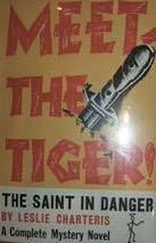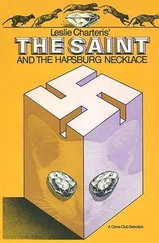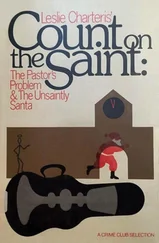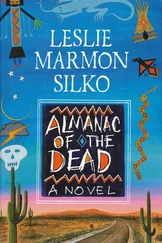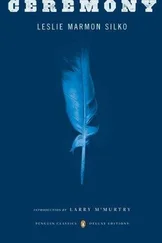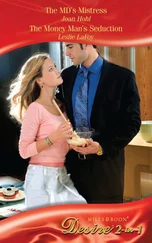Once past that place I felt better. The arroyo is undiminished in spirit. I found a turquoise rock that fits in my palm. It is a light sienna orange, an iron oxide stone with delicate outlines in chrysocolla that accentuate the rock’s trapezoidal shape. The warm orange red and yellow oxides show off the chrysocolla’s beauty. It is one of the loveliest turquoise rocks I’ve found in a while.
A short distance later I bent over to pick up a fragment of brown bottle glass and I spotted a tiny spot of blue so intense I thought it might be a bit of plastic or more spent bubblegum the color of turquoise.
It was a nugget of chrysocolla the size of the end of my little finger though thinner than my finger. It is very solid and hard, though I don’t think it has chalcedony with it. When I licked its surface, it seemed almost impermeable but very soon the moisture on the surface of the nugget was gone, absorbed by the chrysocolla and the dry air in the room.
I happened to turn on National Public Radio while Irene Pepperberg was a guest, talking about her new book, Alex and Me .
I had followed her research into animal intelligence with the famous African gray parrot Alex. I bought the book she published with Harvard University Press in 2000 on her laboratory research work over twenty years with Alex. She compared the results of her work with the gray parrot to that done on language acquisition by the great apes, dolphins and human infants. Alex had the same level of ability to communicate as the great apes and the dolphins.
Today on NPR, Pepperberg talked about her time in Tucson when she was at the University of Arizona. She lived west of Tucson in the desert. One afternoon she brought Alex home with her from the lab where he usually spent the night. She’d gotten a nice cage and stocked it with Alex’s favorite foods and toys. But once in the cage, Alex looked out the window where two tiny desert screech owls were nesting in a mesquite tree. Pepperberg said Alex immediately started to say “I wanna go back! I wanna go back!” Pepperberg pulled the curtains shut so the parrot couldn’t see the nesting owls, but Alex knew they were still there, and Alex kept saying he wanted to go back until finally Pepperberg drove the parrot back to the lab and his cage.
Her work with Alex inspired me to raise my African gray parrot as if she were a parrot child and not a bird. Pepperberg had to follow strict protocols to be able to call her research “hard science.” I had no such impediments. I wanted my parrot child to learn language as a human child does, in the context of a household, and here that means big dogs and other parrots.
Two of my old English mastiffs, Rosie and Macho, spend nights and most days in the summer in the same room with Gray Bird. She knows their names and calls them just as I do.
Gray Bird watches children’s educational television every morning. This season there are a number of children’s cartoons with dogs in them including Clifford the Big Red Dog and Martha the Talking Dog.
The cartoons with the dogs seem to interest her more because she knows what the words “dog” and “dogs” mean. She also knows the dogs have individual names. She never makes a mistake with the names of the six mastiffs, even when I sometimes confuse the two silver fawn mastiffs; Gray Bird always knows which is Thelma and which is Osa.
Gray Bird makes up nicknames for herself. She heard me sing a song about a little gray bird with a little black beak and a little red tail, and she started repeating “Black Beak” and responded to it when I said it; so “Black Beak” became Gray Bird’s first but not last nickname. She also goes by “Chippy Bird Song,” and of course terms of endearment like Gray Baby and Baby Bird.
But just recently Gray Bird called herself “Gray-bee,” her contraction of Gray Baby. If she wants to be called Gray-bee or Black Beak we are happy to oblige to encourage her inventions with names and other words.
Gray Bird is a big fan of Elmo. She knows the names of the other Sesame Street puppets as well, and she knows what time the program is broadcast. She can sing the Sesame Street theme song, and she sings other songs that I sing to her, songs I made up so that Gray Bird is always the subject of the songs.
I enjoy Sesame Street sometimes, so I watched it with Gray Bird which helped reinforce her attention to the program. She likes to watch the Barney program, but I let her do that by herself.
In Africa where the gray parrots live, the tribal people revere them as sacred beings, and their red tail feathers which they shed from time to time are used in prayer bundles and other objects of spiritual power.
Ithought about the owl attack on my macaws in January. The man and machine and the violence he committed against the arroyo had disrupted the area, and must have driven the nesting owls to great lengths. To have three large macaws attacked in two separate aviaries on the same night seems strange and out of proportion.
At first I wondered: Was it the Owl Being, angered by the portraits of the other Lords of the Night and his portrait not yet begun by me? Or did I give someone macaw feathers that somehow found their way to a ritual that costs the macaw’s life in order to heal the human?
No. It was the dust and noise that disrupted that part of the arroyo; it was the damage done to the great horned owls’ habitat by the machine which was just as ferocious and out of proportion as the attack on my beautiful macaws.
I’d already sent county authorities out to survey the private sand and gravel pit; I’d sent letters with photographs I’d made of the progression of the damage; I’d made phone calls to people who could see nothing wrong with gouging boulders from the big arroyo.
The idea had been developing for a while. I mulled it over as I practiced walking past the broken boulders and gouged earth without reacting, averting my gaze, taking deep breaths, not allowing myself to be upset by the widening pit of broken rock and torn up sand. I tried not to notice the new damage, the smashed limestone that once formed part of the bank.
I had to do something. At least I had to try. I recalled many years ago, a group of animal rights activists tried to protect the helpless pure white baby seals from bludgeoning by hunters. The animal rights people stained the baby seals’ white coats with a non-toxic dye. The stain lasted until the baby seals got older, and their coats darkened naturally and became less valuable to the hunters.
What if I painted the emblem of the Star Beings on the rocks that the machine man was about to rip out of the arroyo? This thought crossed my mind and I knew who sent it.
My initial reaction was what good would the paint on the boulders do? Did the dye on the white coats of the baby seals save them? The Star Beings reminded me it might take years before the boulders crushed the man on his machine; if I wanted to speed things up I must do something.
But I was directed by the Star Beings to act: to use children’s washable white tempera to paint the boulders and rocks in danger. It was a long shot, a last try because the man clearly intended to damage and remove more boulders that he’d already begun to excavate.
The Star Beings directed me to paint their glyph, the white cross figure of the star, on all sides of the boulders, and especially on the scars left by the metal claw of the machine or cracks or other damaged inflicted by the machine.
What if the machine man didn’t care about small white crosses painted on the boulders, and he and his machine ripped the boulders out of the arroyo anyway?
Then I realized: once the Star Beings’ small white crosses were painted on the boulders and rocks in the arroyo they worked a kind of magic. All human beings were put on notice that the boulders were under the protection of the Star Beings and must not be disturbed or damaged; all violators would pay terrible consequences.
Читать дальше

